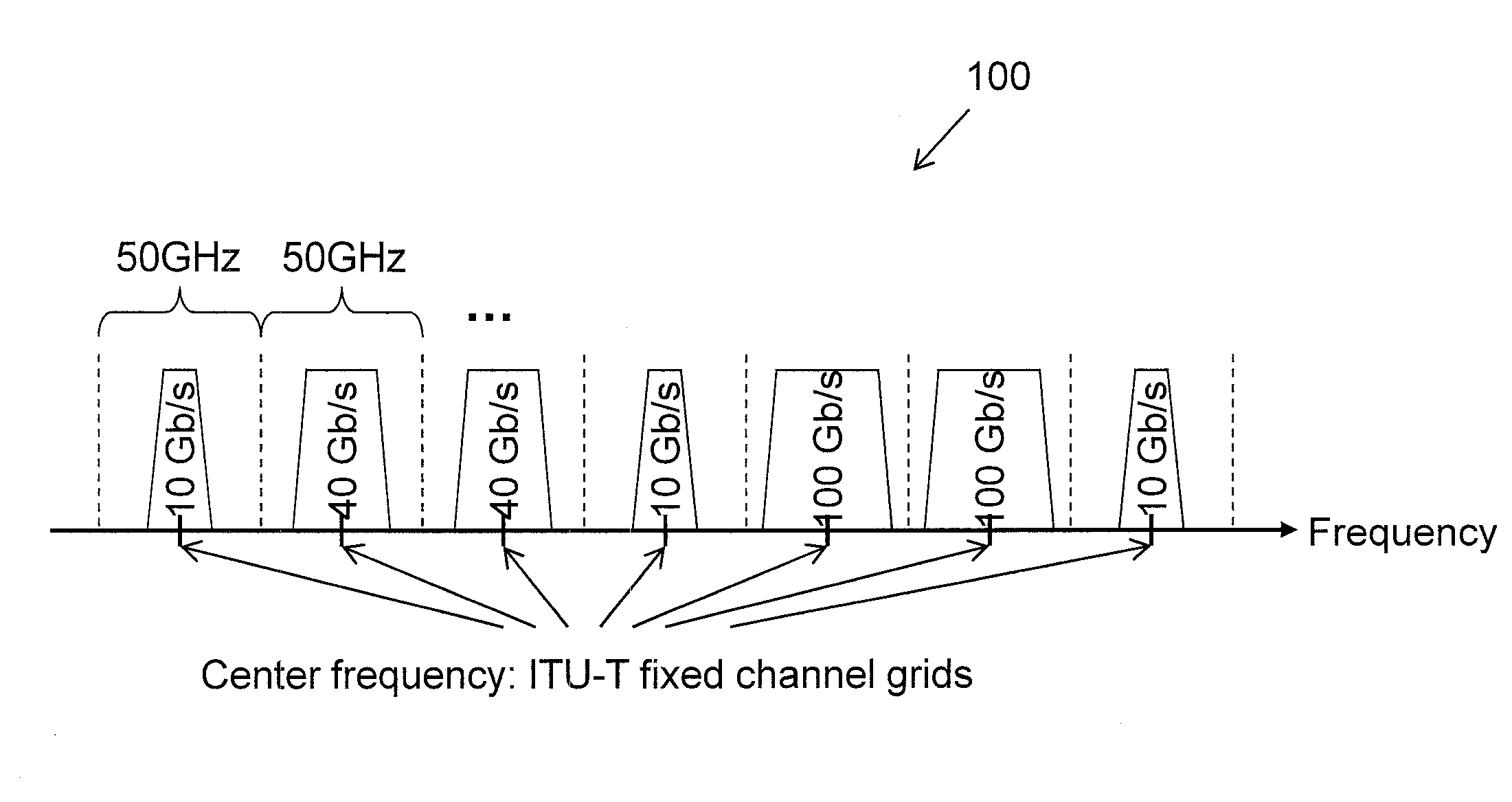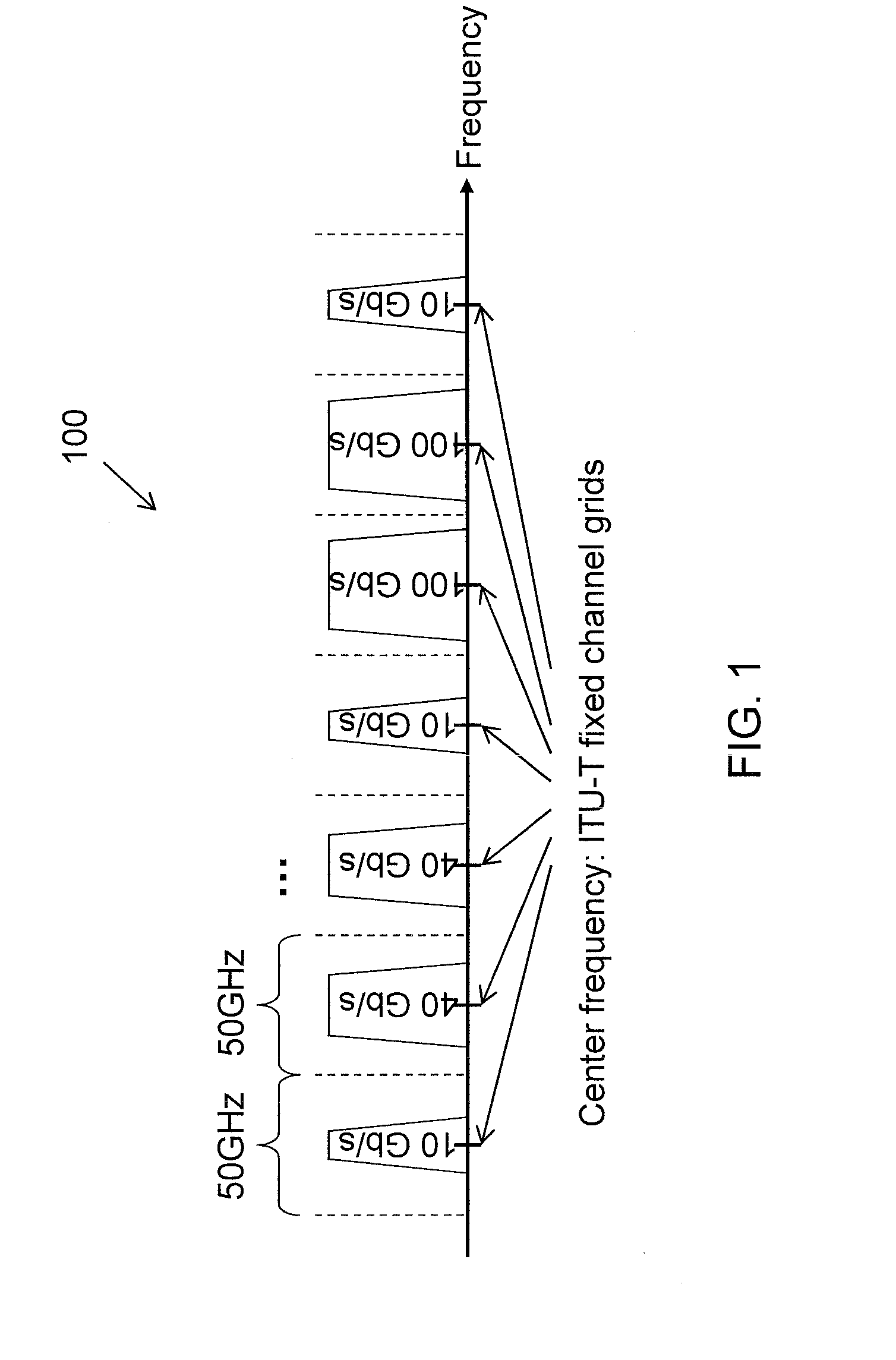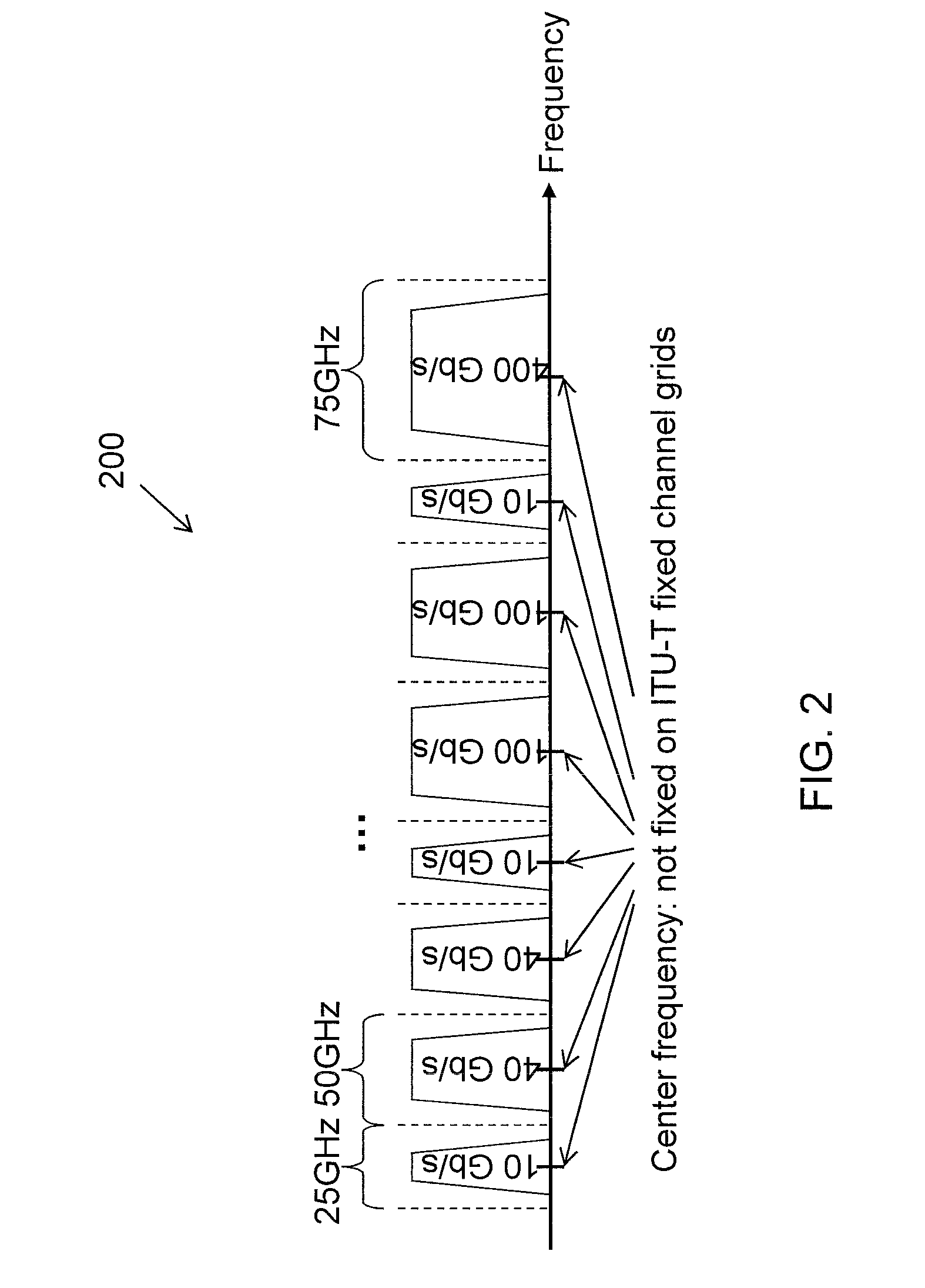Routing, wavelength assignment, and spectrum allocation in wavelength convertible flexible optical wavelength-division multiplexing networks
a flexible optical and wavelength-division multiplexing technology, applied in the field of wavelength-division multiplexing (wdm), can solve the problems of not optimizing the spectrum allocation of channels operating at lower line rates, no single fixed channel grid is optimal for all line rates, and the fixed channel grid may not be sufficient to support immerging super-channels
- Summary
- Abstract
- Description
- Claims
- Application Information
AI Technical Summary
Benefits of technology
Problems solved by technology
Method used
Image
Examples
Embodiment Construction
[0022]As noted above, the present principles are directed to routing, wavelength assignment, and spectrum allocation in wavelength convertible flexible optical wavelength-division multiplexing (WC-FWDM) networks. Advantageously, the present principles address and overcome the aforementioned routing, wavelength assignment, and spectrum allocation in WC-FWDM networks (RWSA-WC) problem.
[0023]In an embodiment, the present principles address routing, wavelength assignment, and spectrum allocation sub-problems at the same time using an auxiliary graph based method. Additionally, the solution for the routing sub-problem is tunable to various methods. Thus, the proposed approach may be interchangeable referred to herein as the tunable routing, wavelength assignment, and spectrum allocation approach.
[0024]Again referring to existing solutions to the routing, wavelength assignment, and spectrum allocation (RWSA) problem, as noted above, the same may still block connections due to the waveleng...
PUM
 Login to View More
Login to View More Abstract
Description
Claims
Application Information
 Login to View More
Login to View More - R&D
- Intellectual Property
- Life Sciences
- Materials
- Tech Scout
- Unparalleled Data Quality
- Higher Quality Content
- 60% Fewer Hallucinations
Browse by: Latest US Patents, China's latest patents, Technical Efficacy Thesaurus, Application Domain, Technology Topic, Popular Technical Reports.
© 2025 PatSnap. All rights reserved.Legal|Privacy policy|Modern Slavery Act Transparency Statement|Sitemap|About US| Contact US: help@patsnap.com



